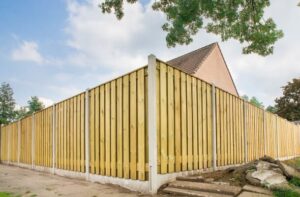The Major Landmarks of Quincy, MA
Quincy, Massachusetts is a historic city located just south of Boston. Founded in 1625, Quincy has a rich history and many interesting landmarks for residents and visitors to explore. Here are some of the major landmarks found throughout Quincy.
Historical Landmarks
Quincy has numerous historical landmarks that provide a window into the city’s past.
Adams National Historical Park
One of the most famous historical sites in Quincy is the Adams National Historical Park. This national park preserves the homesteads of Presidents John Adams and John Quincy Adams, as well as other family members.
Some highlights of the Adams Historical Park include:
- John Adams Birthplace (1735): The saltbox house where John Adams was born in 1735. This was also where John and Abigail Adams lived from 1764 to 1788.
- John Quincy Adams Birthplace (1767): The birthplace of 6th US President John Quincy Adams in 1767. This was also where John and Abigail Adams lived from 1788 to 1800.
- Stone Library: Built in 1870, this building houses over 14,000 historic manuscripts and books belonging to four generations of the Adams family. The library served as the Adams family repository for generations.
- The Old House: Also called Peacefield, this was the home of John Adams and his wife Abigail from 1788 until their respective deaths in 1826 and 1818. The house provides insights into domestic life and entertaining in the 18th and 19th centuries.
- Formal Gardens: Built between 1935 and 1943, these gardens reflect landscape design trends from the Adams era during the late 18th and early 19th centuries.
United First Parish Church
Built in 1828, the United First Parish Church is significant for housing the tombs of Presidents John Adams and John Quincy Adams as well as their wives, Abigail Adams and Louisa Catherine Adams. Designed in a Greek Revival style, the church is home to the active Unitarian Universalist congregation that both Adams presidents belonged to.
Josiah Quincy Homestead
Built in 1770, this Georgian mansion was the home of Revolutionary War patriot Josiah Quincy Jr. and his wife Abigail. The home provides a window into life in colonial New England. Highlights include 18th century furnishings, portraits, and decorative arts owned by the Quincy family.
Quincy Homesteads
Quincy has two house museums that showcase life in the 19th and 20th centuries:
- Dorothy Quincy Homestead (1746): The birthplace and childhood home of Dorothy Quincy, wife of founding father John Hancock. Period furnishings and decorative arts are on display.
- Quincy History Museum (1848): Located in an Italianate Victorian mansion, this museum shows what life was like in Quincy throughout the 19th and 20th centuries. Exhibits cover topics like domestic life, recreation, and industries in Quincy.
Other Historic Homes
In addition to the major historic homes, Quincy has various historic houses from the 17th, 18th, and 19th centuries that showcase various architectural styles:
- Quincy Homestead (1686)
- John Codman House (1742)
- Munroe Tavern (1690)
- Thomas Crane Public Library (1882)
Cultural Attractions
Quincy also boasts several cultural landmarks and institutions for visitors to appreciate art, music, and theater.
Quincy Center for the Performing Arts
This venue located in downtown Quincy opened in 2019 and hosts theater, music, and dance performances throughout the year. The flexible 400-seat theater provides an intimate setting for arts and cultural programming.
Thomas Crane Public Library
Established in 1880, this historic public library is renowned for its beautiful architecture and extensive collections. The public library maintains an events schedule featuring author talks, lectures, and children’s programming.
Quincy Art Association Gallery
Located in a carriage house built in the 1870s, the Quincy Art Association Gallery exhibits works by local artists. The gallery is home to the oldest art association in Massachusetts, founded in 1919. The QAA also offers art classes to the public.
Eastern Nazarene College Music Department
ENC’s Music Department supports private lessons, chamber ensembles, jazz band, chorale groups, handbells, and more. Music performances by ENC students and faculty are open to the public throughout the academic year.
Woodward School for Girls Theatre
This all-girls private school has an extensive theater arts program. Woodward stages theater productions, dance performances, and music concerts open to the public.
Bay Players Community Theater
Founded in 1941, the Bay Players are Quincy’s longest running community theater troupe. They stage productions at various venues in Quincy.
Historic Churches
Quincy has a number of historic church buildings dating back to the 17th century that contribute to the city’s historic character.
Quincy Congregational Church
The congregation was established in 1639, making it one of the oldest Protestant churches in the United States. The current Georgian meetinghouse was built in 1732.
Church of the Presidents
Founded in 1639, this United Church of Christ congregation has been associated with the Adams family since the 18th century. The current Gothic Revival building was constructed in 1888.
Temple Beth El
This Reform Jewish congregation was established in 1859, though the current Byzantine-style building was built in 1925. The temple has notable stained glass windows made in Munich, Germany.
St. John the Baptist Catholic Church
Founded in 1883 to serve Quincy’s growing Irish Catholic community, this handsome Romanesque Revival church was the city’s first Catholic parish.
Wollaston Congregational Church
Built in 1923, this neo-Georgian meetinghouse was designed by architect Bertram Goodhue. The church boasts Tiffany stained glass windows and an Aeolian-Skinner pipe organ.
Civic Architecture
Quincy contains excellent examples of civic architecture from the 19th and 20th centuries.
Quincy City Hall
The seat of the municipal government has been located in the impressive Second Empire-style building since 1875. This served as Quincy’s third city hall.
Quincy Masonic Hall
Constructed in 1870 for the Rural Lodge of Masons, this Victorian Gothic building is an important local landmark. The Masonic Hall now also serves as a public event space.
Coddington Hall
This beautiful stone building located next to Quincy City Hall was built in 1879 for Quincy’s street railway company. It later served as Quincy’s central police station prior to the construction of the new Public Safety Building.
Quincy Public Schools Administration Building
Built in 1904, this impressive brick building with limestone trim became the headquarters for Quincy’s Public Schools system. It was expanded with two rear wings in the 1920s. The education administration offices relocated to new facilities in 2019.
United States Post Office
Quincy’s main post office building was constructed in 1933 in the Colonial Revival style. The interior lobby features New Deal-era murals. This post office was added to the National Register of Historic Places in 1986.
Memorials & Monuments
There are also a number of statues, memorials, and monuments found across Quincy commemorating people and events significant to the city’s history.
John Adams Memorial Stone
Positioned near the First Parish Church, this large granite block marks the first resting place of President John Adams and his wife Abigail from 1826 to 1828. Their remains were later moved to a permanent crypt in the church basement.
Adams Memorial Sculpture
This larger-than-life bronze statue by sculptor Daniel Chester French depicts the patriot John Adams in a seated position. It was dedicated in front of Quincy City Hall in 1930.
USS Salem & USS Newport News Memorials
Two naval ship guns are located in Pageant Field as memorials honoring the heavy cruisers USS Salem and USS Newport News that were both named after the city of Quincy.
World War II Memorial
Dedicated in 2013, this memorial in Merrymount Park honors Quincy residents who served in World War II, especially the 200 residents who died. The black granite pillars are inscribed with veterans’ names.
Quincy Vietnam Veterans Memorial
Unveiled in 1988 across from City Hall, this memorial commemorates Quincy residents who lost their lives in the Vietnam War. The pentagon-shaped monument has engraved names of the casualties.
Firefighters Memorial
Located at Fire Headquarters, this memorial depicts two bronze firefighters in relief honoring all City of Quincy firefighters killed in the line of duty since 1792. Granite plaques list each fallen firefighter’s name.
Architectural Sites
In addition to specific buildings, Quincy has several notable architectural sites and districts showcasing particular architectural styles over different eras.
Quincy Center Historic District
This commercial area showcases a variety of architecture spanning 200 years of development in Quincy Center. Highlights include the 1845 Granite Bank Building, 1926 Art Deco Patriot Ledger Building, and modernist 1960 Town Brook Parking Garage.
Marina Bay
This residential neighborhood located on a peninsula in Squantum was developed beginning in the 1980s. Marina Bay exemplifies the “New Urbanism” approach to architecture and urban planning. Home styles include Victorian, Colonial Revival, and Neo-Traditional designs.
Wollaston Hill Historic District
This historic district encompasses a 230-acre residential area showcasing high-style architecture from the 18th, 19th, and early 20th centuries. Many original Colonial, Federal, Victorian, and Colonial Revival homes remain intact in the district.
Modern Commercial Development
In addition to its historic sites, Quincy also has some noteworthy modern amenities.
Marina Bay Boardwalk & Dining District
This scenic half-mile boardwalk overlooking Quincy Bay provides access to several waterfront restaurants, breweries, and food shops. Popular dining and drinking spots include The Townshend, Victory Point, Fat Fish Bar & Grille, and Down River Ice Cream.
Quincy Quarries Reservation
This former commercial granite quarry was redeveloped beginning in the 1980s into a major public recreation area with hiking trails, rock climbing, and the 40-acre Granite Links Golf Club. The site also includes a restaurant and function hall called The Cottage at the Quarries.
North Quincy Station
Part of the MBTA Red Line expansion into Quincy, this modern intermodal transit station opened in 2019. The impressive station links bus transit, the subway, parking, and pedestrian access in a new transit-oriented development adjoining a residential community.
Hancock Adams Common
Built in 2019, this public plaza serves as a central gathering spot in Quincy Center. The attractively landscaped common has a lawn for public events, fountain, food kiosk, and underground parking garage.
Natural Landmarks
Quincy’s natural features and open spaces provide beautiful scenery. Here are some of the city’s noteworthy natural landmarks.
Blue Hills Reservation
The majority of this sprawling 7,000 acre park is located within Quincy’s borders. Managed by the Massachusetts Department of Conservation and Recreation, the Blue Hills Reservation provides opportunities for hiking, mountain biking, skiing, and scenic vistas overlooking the metropolitan Boston area.
Wollaston Beach
This public beach located along Quincy Bay in the Wollaston neighborhood is a popular summertime destination. Facilities include a bathhouse and refreshment stand. The beach provides attractive views across the bay of the Boston skyline.
Quincy Shore Reservation
Owned by the Massachusetts Department of Conservation and Recreation, this reservation protects 3 miles of oceanfront property and provides walking paths with scenic ocean views. The reservation includes historic Fort Independence and stretches from Squantum Point Park to Belmont Street in North Quincy.
Town Brook
Flowing from the Blue Hills eastward through Quincy Center, this stream was a key factor in Quincy’s early settlement and industrial development. Today the brook flows through open space corridors and serves as habitat for birds, fish, and other wildlife.
Whitney Woods
This forested 172-acre reservation features hiking trails through a mix of conifer stands, deciduous woods, and wetlands ecosystems. Owned by the City of Quincy, these woods provide opportunities for nature recreation close to residential neighborhoods.
Cemeteries
Quincy’s old burial grounds provide tranquility as well as historic interest.
Hancock Cemetery
Established in 1664, this small family plot was the burial ground for early Quincy families and patriots, most notably John Hancock. Also buried here is Hancock’s aunt Lydia Hancock, depicted on the Seal of the City of Quincy.
Adams Crypt
Located beneath the United First Parish Church, this basement crypt contains the tombs of Presidents John Adams and John Quincy Adams along with their wives, Abigail and Louisa Catherine Adams.
Mount Wollaston Cemetery
Founded in 1835, this 200-acre cemetery located on Furnace Brook Parkway contains many ornate Victorian-era headstones and mausoleums. Graves include some famous Quincy residents such as conductor Arthur Fiedler and baseball player George Woodruff.
St. Mary’s Cemetery
Established in 1903, this Catholic cemetery located on Hancock Street has memorial sculptures and mausoleums interspersed among its gravesites. Many Irish and Italian Catholic immigrants who settled in Quincy are buried here.
So in summary, Quincy’s landmarks encompass historic homes, civic buildings, houses of worship, memorials, architecturally significant districts, natural features, and burial grounds. From Native American pre-history through the modern day, these sites reflect the growth and development of this historic city over nearly 400 years since settlement by English colonists in 1625.
Exploring Quincy’s landmarks provides a sense of the community’s changing identity from colonial farming village to Revolutionary center of patriotism to hub of granite quarrying and shipbuilding to streetcar suburb and finally modern city. The spirit of history comes alive when visiting these touchstones to Quincy’s heritage.
Hours
Monday: 9:00 AM – 5:00 PM
Tuesday: 9:00 AM – 5:00 PM
Wednesday: 9:00 AM – 5:00 PM
Thursday: 9:00 AM – 5:00 PM
Friday: 9:00 AM – 5:00 PM
Saturday: 9:00 AM – 5:00 PM
Sunday: 9:00 AM – 5:00 PM
Contact Us.
Get Solutions For All Fencing Services
Every day from
9:00 — 5:00
Call to ask any question




